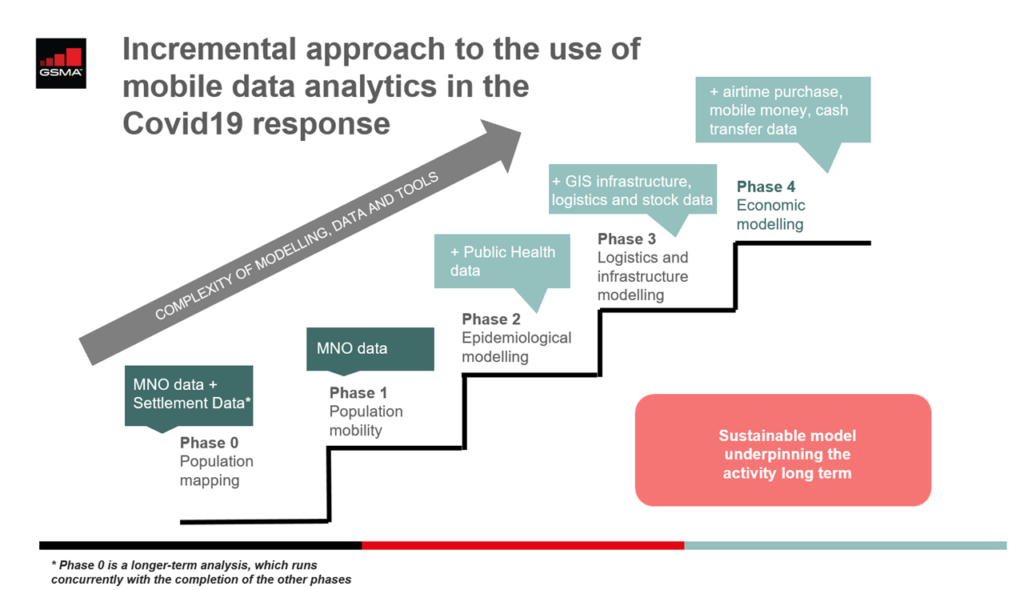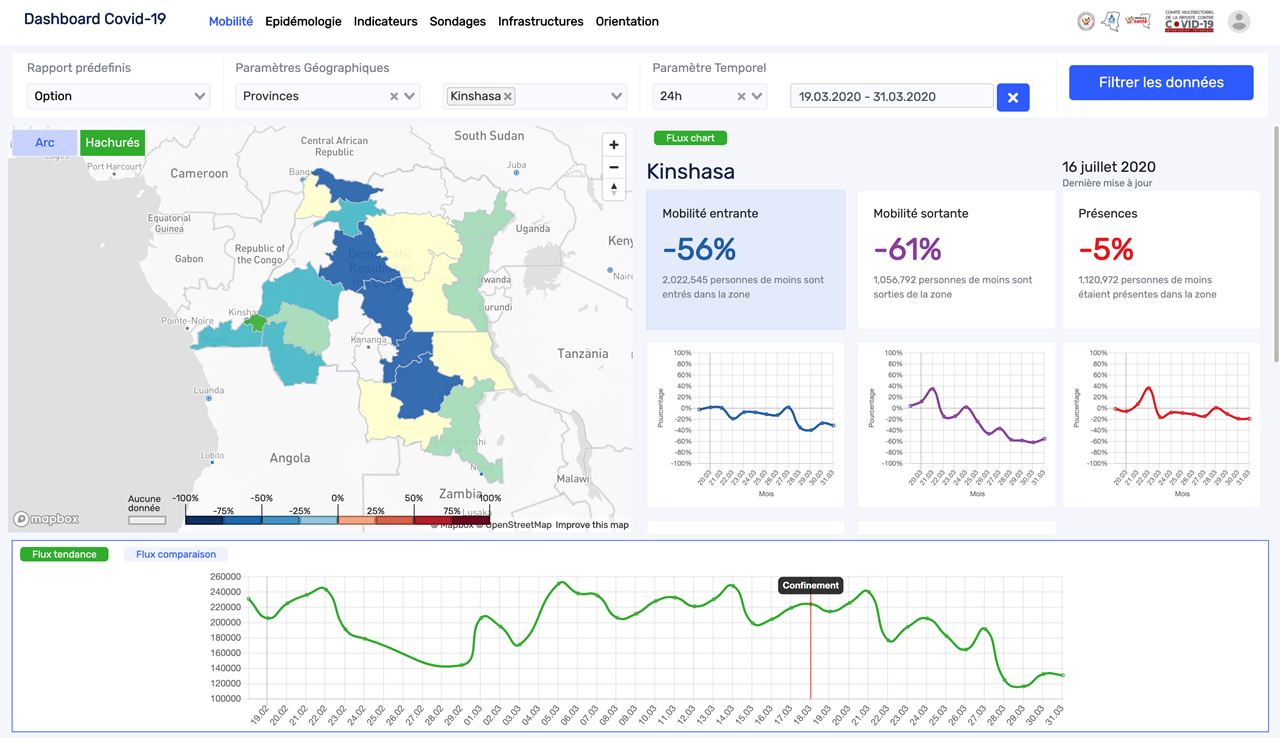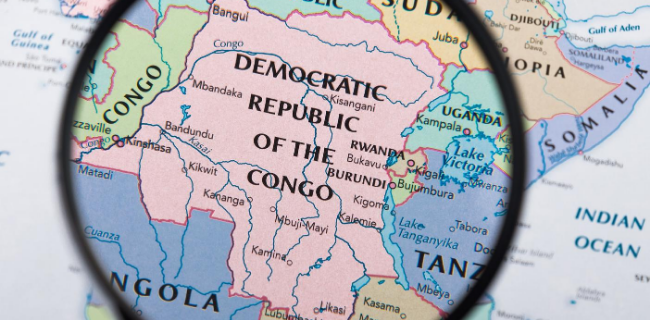The Democratic Republic of Congo (DRC) is particularly vulnerable to the COVID-19 epidemic. The country is already dealing with cholera, a measles epidemic that has caused 6,000 deaths since January 2019, as well as a new outbreak of Ebola in the Équateur province. At the same time, the country’s economy is very exposed to the unprecedented economic slowdown caused by global containment measures to “flatten the curve” with the IMF’s growth projections for the country downgraded to -2.2 per cent for 2020.
As of 13 July, the country has reported 8,075 COVID-19 cases and 190 deaths, with around 85 per cent of confirmed cases concentrated in the Kinshasa province. While the government is actively working with partners to slow the propagation of the virus, support vulnerable communities, and strengthen the resilience of the health system, the lack of data is a major impediment.
The DRC has not had a census since 1984, and following the process of decoupage in 2015 that saw the country’s existing 11 provinces being split up to 26, data to inform evidence-based decision making by province is fairly limited. A consortium led by Grid3 is currently trying to update population estimates for some of the DRC’s 26 provinces, while also overlaying these population estimates with the latest health infrastructure data. The importance of this exercise is highlighted by their recent mapping of villages in the Kongo Central province. While the most comprehensive dataset in the Kongo Central province had only about 500 villages named and located, Grid3’s settlement layer featured over 9,000.
The country’s ongoing battle with other diseases, as well as the general vulnerability of the population to economic shocks (73 per cent of the DRC’s population live under the poverty line), make informed action based on data that weighs different policy trade-offs all the more important.
In low-income countries like the DRC, where data quality is poor and national statistics offices under-resourced, aggregated, anonymised mobile operator data can provide vital and actionable insights for decision-makers in the context of COVID-19. Some of the relevant use cases include mapping population mobility across provinces and health districts, identifying potential hotspots for the propagation of the virus, and mapping out evolving logistical and resource requirements for vital assets (such as health centres) over time.

How the mobile industry is supporting health authorities and relevant partners in the DRC
In May 2020, the GSMA, ANICiiS[1] and Kinshasa Digital[2], with the support of Texaf Digital Campus, together with mobile operators Africell, Orange and Vodacom, reached an agreement to collaborate to use mobile big data analytics to inform the efforts of the Government of DRC in responding to COVID-19. The country’s telecommunications regulator l’Autorité de Régulation de la Poste et des Télécommunications du Congo also endorsed the project. Other key partners include Fluxvision[3], PATH, an NGO advising the Congolese authorities on digital health interventions, Flowminder, an NGO that leverages big data to improve public health and welfare, and the Digital Impact Alliance, an NGO that aims to advance digital inclusion.
Beyond coordinating the contribution of different mobile operators and their partners, the GSMA is also supporting this project through sharing lessons learnt from its global AI for Impact initiative, and providing data science expertise. The GSMA is also ensuring that the project adheres to adequate data privacy standards.
What has been achieved so far
As part of the engagement, Orange DRC in partnership with Flux Vision have already provided aggregated and anonymised data sets to Kinshasa Digital. Based on these insights, Kinshasa Digital is building a nationwide dashboard, which allows health authorities to track population mobility trends within and across different health districts throughout the country. This allows government authorities insight into how movement patterns change in response to government measures, as well as other factors such as economic incentives, or insecurity. As the virus is spreading rapidly from Kinshasa’s most affected districts (such as Limete, Gombe, Binza-Meteo, Binza-Ozone) to other districts in Kinshasa, and to other provinces in the country (most notably Kinshasa, Kongo Central, Sud Kivu, and Haut-Katanga) amid mining activities resuming, it will be a useful tool for the government to track the potential propagation of the virus and to devise informed policy responses.

A population mobility dashboard hosted on StopCovid DRC with Orange RDC data
In parallel, Vodacom DRC and Flowminder have provided government authorities with a report, which uses call detail records (CDRs) to analyse the impact of the government’s confinement measures on mobility patterns in Kinshasa’s Gombe district. The analysis revealed that there is a drop of 70% in the total flow of subscribers travelling to Gombe after the confinement, suggesting that adherence to the government’s measures was quite high.
Africell has also partnered up with Flowminder, and will also be providing vital insights to government authorities going forward. In parallel, Flowminder and the GSMA are also in conversations with Grid3 and WorldPop to see how mobile data can further enhance the accuracy of these vital population estimates.
Looking Ahead
Leveraging the dashboard, Kinshasa Digital and the GSMA are also closely working with mobile operators and the Ministry of Health to identify potential future hotspots (as the case load outside of the province of Kinshasa is accelerating rapidly). Further, beyond understanding population mobility and potential future hotspots, Kinshasa Digital are also working with relevant partners to provide updated insights on the stock levels and resource requirements of health facilities in the province of Kinshasa.
In the longer-term, the GSMA hopes that this project underlines the value of mobile big data to government stakeholders beyond the Ministry of Health, strengthens the capacity of local mobile operators, and leads to further such partnerships to help address the country’s challenges.
For more information on AI for Impact, and how mobile big data analytics can help combat COVID-19, please go to:
[1] Agence Nationale d’Ingénierie Clinique d’Information et d’Informatique de Santé
[2] A web development and digital communication agency that serves as one of the key technical partners of ANICiiS and the Ministry of Health
[3] A division of Orange Business Services that offers near real- time, reliable statistics on mobility patterns


